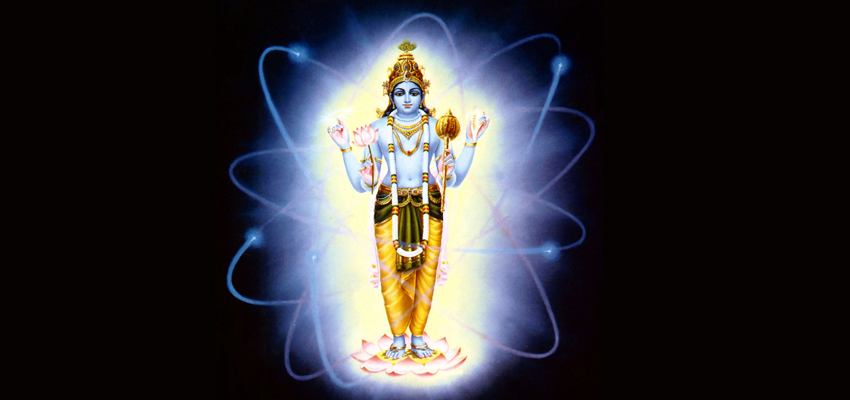 In 1905 Einstein published a paper about the “Photoelectric Effect” which showed that electromagnetic radiation can behave as particles rather than waves in some experiments. It was for this work that he later won the Nobel prize for Physics even though he is more famous for his work on Relativity (with its famous equation E=mc2).
In 1905 Einstein published a paper about the “Photoelectric Effect” which showed that electromagnetic radiation can behave as particles rather than waves in some experiments. It was for this work that he later won the Nobel prize for Physics even though he is more famous for his work on Relativity (with its famous equation E=mc2).
Wave-Particle duality plays a big role in modern physics and Quantum Mechanics in particular. In basics terms it says that when we get to a really small scale, we can no longer picture the world as we humans perceive it. Small fundamental “particles” like electrons can be thought of as tiny bits of matter whizzing round at fast speeds BUT they can also be thought of as waves which have no fixed position but exist as disturbances in space. Similarly, something like light which we have always thought of as waves can behave like particles. The real problem in getting our heads around this that something can behave as both a wave and particle and the way we see it depends purely on the experiment we carry out.
 For example, if we carry out any experiment involving electricity, we “see” electrons behaving as particles. But the “two slits” experiment can only be explained if we think of the electrons behaving as a wave and the Photoelectric Effect is explained by the introduction of “photons” whereas it was universally believed that light consisted of waves.
For example, if we carry out any experiment involving electricity, we “see” electrons behaving as particles. But the “two slits” experiment can only be explained if we think of the electrons behaving as a wave and the Photoelectric Effect is explained by the introduction of “photons” whereas it was universally believed that light consisted of waves.
This led to a big crisis in Physics. Not so much because the theories we all believed are wrong (they aren’t) but because the way we think about the world and the nature of things was fundamentally wrong. This relates to wider problem of how we can translate the precise mathematically equations of theory and experiment into words and ideas for explaining it. And it turns out that this is more a problem of philosophy rather than science because the way we think about the world is all to do with our philosophical outlook (or the outlook of our teachers and ultimately the thinkers who came up with the ideas we are taught).
 Although much of Western science was against the teachings of the Catholic Church, much of the thinking until about one hundred years ago is actually largely based on Judeo-Christian ways of thinking. For example, the Bible says that the world was created by an absolute being called “God” and that he is separate from his creation (i.e. He exists outside of the universe or even irrespective of the universe). With this we can easily understand the thinking of a great scientist like Newton.
Although much of Western science was against the teachings of the Catholic Church, much of the thinking until about one hundred years ago is actually largely based on Judeo-Christian ways of thinking. For example, the Bible says that the world was created by an absolute being called “God” and that he is separate from his creation (i.e. He exists outside of the universe or even irrespective of the universe). With this we can easily understand the thinking of a great scientist like Newton.
 Although he made many important discoveries and advanced Physics greatly, the principle of a static universe and determinism underlies his work. Put more simply, he looks at any experiment as if the observer is outside of what is going on and can have no effect on the outcome once the experiment is started off (unless he actually chooses to interfere). This is rather like the idea of God setting off the universe and then watching from outside and only effecting the universe when he chooses to.
Although he made many important discoveries and advanced Physics greatly, the principle of a static universe and determinism underlies his work. Put more simply, he looks at any experiment as if the observer is outside of what is going on and can have no effect on the outcome once the experiment is started off (unless he actually chooses to interfere). This is rather like the idea of God setting off the universe and then watching from outside and only effecting the universe when he chooses to.
It turns out that the universe is a bit more complex than this and we need to widen our frame of thought to explain the findings of modern science. In particular how the same thing can appear to us in completely different ways even when we are not doing anything to it apart from looking at it in a different situation (experiment).
 Within Hinduism we see a wide variety of deities which can be thought of in animal, human or superhuman form or even without form. Some systems of Hindu thought even think of the divine as without attributes let alone without form – i.e. as a principle that underlies all of reality. When we study the rich diversity of various philosophies and schools within Hinduism we come to appreciate the interchangeablity of deities throughout Hindu society and history. When you think of the world like this, it is easier to appreciate how the smallest building blocks of nature can also interchange their appearance to us depending on how we choose to look at them.
Within Hinduism we see a wide variety of deities which can be thought of in animal, human or superhuman form or even without form. Some systems of Hindu thought even think of the divine as without attributes let alone without form – i.e. as a principle that underlies all of reality. When we study the rich diversity of various philosophies and schools within Hinduism we come to appreciate the interchangeablity of deities throughout Hindu society and history. When you think of the world like this, it is easier to appreciate how the smallest building blocks of nature can also interchange their appearance to us depending on how we choose to look at them.































